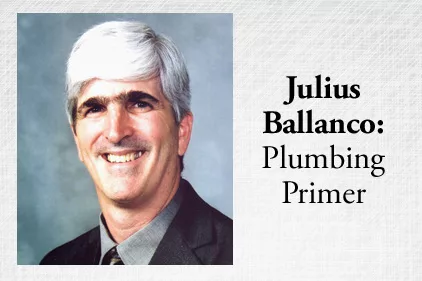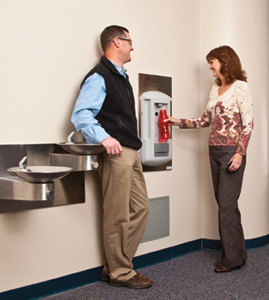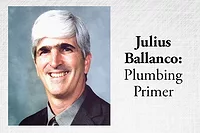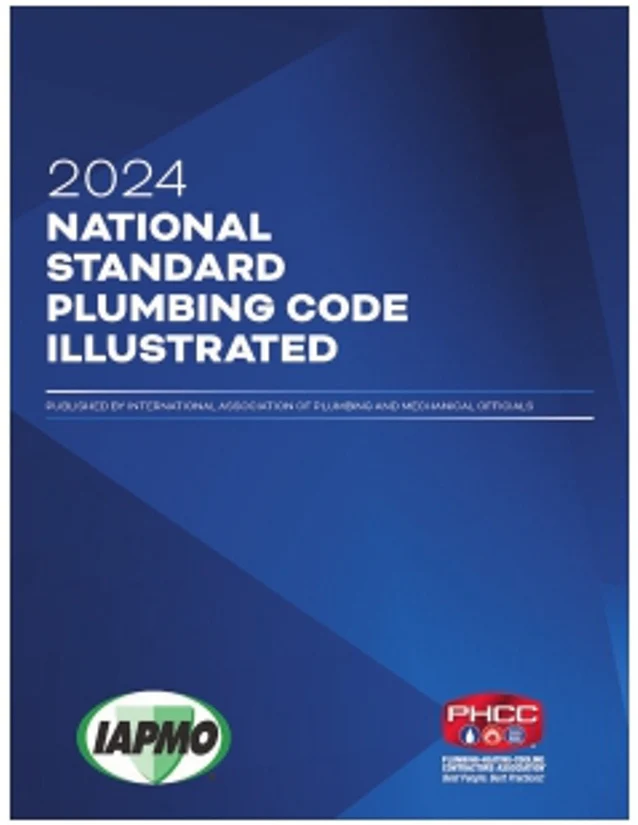Six commonly asked questions about no-lead plumbing
Are you still confused?


|
| Photo credit: ©istockphoto.com/3dalia |
Independence Day marks the six-month anniversary since the federal no-lead plumbing law went into effect. With three years leading up to this no-lead law, you would think that every question had been answered. But that doesn’t seem to be the case.
Are you still confused?
I thought I would list the most common questions I have received over the past few months and provide you with the answers.
1. Can I install some of my leftover lavatory faucets in the public toilet room of my church?
This is a tough one. The answer is maybe. When you read the law, you are allowed to use leaded products for uses where the water is not used for human consumption. Public lavatories are intended to be used for washing one’s hands and only washing one’s hands. So, technically, you could install leaded faucets in this application. The problem is that not everyone interprets a public lavatory faucet in toilet rooms, such as a church, as being a fixture that is not used for human consumption.
2. Do residential fire sprinkler heads have to be no-lead?
No. Whether the system is a stand alone or multipurpose residential fire sprinkler system, the sprinklers do not have to be no-lead. Most residential sprinklers have approximately 3% lead, similar to other products that are not required to meet the no-lead limitations.
Some have misinterpreted the law as applying to residential sprinklers used in a multipurpose piping system, assuming that this type of system also supplies water for drinking and food preparation. However, the sprinkler is not a device or fixture that supplies water for human consumption.
Residential fire sprinklers are unique. Unlike the other products exempt from the federal law, residential fire sprinklers must still comply with NSF 61. Flush valves, ballcocks and shower valves, to name a few, also are exempt products but they are not regulated by NSF 61. You still have to make sure that the residential sprinkler complies with NSF 61.
On a recent check, all the residential sprinklers I investigated did comply with NSF 61. Standard sprinklers or quick-response sprinklers are not listed to NSF 61, so make sure the sprinklers are residential sprinklers.
3. What is in no-lead brass?
Brass is identified as a copper alloy, meaning its main content is still copper. Most no-lead brass has at least 60% copper. The next highest percentage of material is zinc. In leaded brasses, there is only between 2% to 3% lead. The no-lead brasses exchange the lead with either silicon, bismuth or more zinc. This is an oversimplification, but brasses now fall into categories of silicon brass, bismuth brass or zinc brass.
You may hear different names given to the brass. These are typically registered trademarks. If you hear or read a trademark name, you can associate that brass with one of the categories of no-lead brass. For example, Eco Brass is a silicon brass. Federalloy is a bismuth brass. Eco Stream is a zinc brass.
4. How do I know what brass a manufacturer is using?
Sometimes the manufacturer will tell you. Typically, it will use the trademark names. Other times, the manufacturer might promote what it is using. A few valve manufacturers do that in their ads. But you may never find out. Manufacturers are not required to divulge their trade secrets. The brass they use is considered part of a trade secret.
The only entity that finds out the formulation of the brass is the testing and listing agency, which it keeps confidential for the manufacturers. All a manufacturer is required to tell you is that its products are certified as being no-lead. That is a part of the third-party listing.
It also may be possible that a manufacturer lists a Unified Numbering System number for the brass. That number will start with a “C” and have five numbers following. The “C” indicates it is a copper alloy. The numbers identify the formulation. UNS numbers and the associated formulation are readily available online.
5. Are manufacturers gouging me with the higher prices of no-lead brass products?
No. No-lead brass costs more to produce and manufacture. Leaded brass is a wonderful brass to machine. There is a machining rating given to brass. The set point for the machine rating is leaded brass, having a machinability rating of 100. No-lead brass has machinability ratings around 80, possibly even lower.
That means the tools have to turn slower when making a product. It also means the tools wear out faster. No-lead brass requires more lubrication and cooling during the machining process. Finally, the heat treatment of the brass is different. More time means more money. So, the manufacturers have no other choice than to pass the higher cost of the no-lead brass onto their customers. They are not gouging you.
6. Is no-lead brass as good as leaded brass?
I’ll go out on a limb and answer no. Not yet. In 30 to 40 years, my answer may change. The problem the manufacturers have with no-lead brass is lack of history. Leaded brass has been used for plumbing products for the last 80-plus years. We know how it responds, we know how it works, and we know how to machine, cast and forge it effectively. With no-lead brass, all that has yet to be learned by manufacturers.
The field of metallurgy is a lot of science but still a little bit of art. The art is knowing how to apply the science. When we have a new material developed, we rely completely on the science of the material. But in the field, knowing art is what makes wonderful products. Art is learned through experience.
No-lead brass also is more difficult to solder. That is not to say you can’t solder no-lead brass. Of course you can. However, it will not be as forgiving as leaded brass. Hence, you need to solder the way you were trained during your apprenticeship years.
Some no-lead brass is stronger than leaded brass. But when you increase strength, you normally sacrifice ductility. If you manhandled leaded brass, you often got away with it. The same may not be true with no-lead brass. However, you are not supposed to manhandle brass to begin with. If you have other no-lead questions, let me know at jbengineer@aol.com.
HELPFUL LINKS:
Looking for a reprint of this article?
From high-res PDFs to custom plaques, order your copy today!









